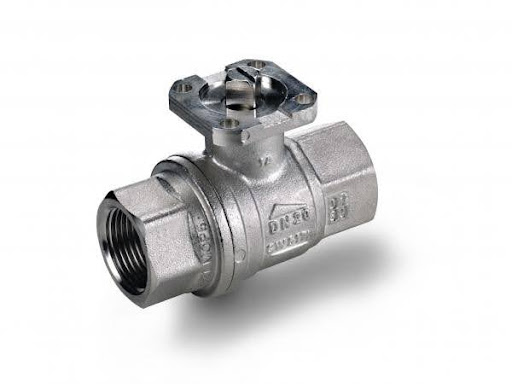
Ball valve leaks are among the most common maintenance challenges in both domestic and industrial systems. Whether caused by wear, improper installation or extreme operating conditions, leaks can reduce efficiency and compromise safety. This article explains how to recognise, prevent and fix ball valve leaks, offering practical guidance based on the technical standards and maintenance recommendations outlined by Bonomi Industries. Understanding these procedures will help ensure long-term reliability and optimal system performance.
Understanding ball valve leakage
A leaking ball valve can compromise an entire system’s efficiency, leading to wasted resources, safety concerns and costly downtime. Ball valve leaks can occur externally or internally and understanding the difference between these types of leakage is essential to determine the correct intervention.
External leakage usually appears around the valve body, the stem, or the threaded connections. This type of leak is visible and often results from worn seals, improper installation, or excessive mechanical stress on fittings.
On the other hand, internal leakage occurs when the ball no longer seals properly, allowing the medium to pass even when the valve is fully closed. This can be verified by closing the upstream valve and checking whether the downstream flow completely stops. If it continues, the valve likely has an internal leak.
Common causes of a leaking ball valve
Several factors can lead to leakage, most of which are related to gradual material degradation, mechanical stress or incorrect handling of the valve during installation and operation. The most frequent causes include the deterioration of elastomeric seals and PTFE seats, corrosion caused by aggressive fluids or environmental exposure and mechanical fatigue due to pressure pulsations or thermal cycling. Excessive pressure and temperature fluctuations can compromise both the valve body and sealing materials, while poor installation practices—such as torsion, bending or uneven tightening of threaded connections—can introduce stress points that eventually lead to leakage.
Another contributing factor is the presence of hard water, sediments, or particulate matter, which can erode sealing surfaces and cause internal scaling that impairs tight shutoff. Over time, these deposits reduce the smooth rotation of the ball and affect the uniform pressure applied to the seals, resulting in micro-leaks that worsen with continued use. In some cases, insufficient lubrication or lack of periodic operation may further accelerate wear on internal components.
The official RuB documentation (IMO001.20) from Bonomi Industries highlights that valves operating in demanding environments—such as those near temperature or pressure limits, or exposed to continuous vibration—should be inspected at least every three months. Regular inspection allows early detection of wear patterns, minor leaks, or stiffness in operation, ensuring consistent functionality and extending the valve’s effective service life.
Preventing ball valve leaks
Preventing leakage begins at the installation stage and continues through regular maintenance. Here are several practical recommendations to minimise the risk of leaks and extend a valve’s lifespan:
- Ensure that installation is performed by qualified personnel and that the valve is correctly aligned with the pipeline, avoiding strain or torsion.
- Avoid conditions close to the valve’s technical limits, such as excessive temperature or pressure.
- Regularly operate the valve to prevent deposits or seal stiffening. For systems with hard water, operate the valve monthly; for very hard water, every two weeks.
- Periodically inspect the valve, particularly under heavy-duty or extreme conditions, to verify that the closed position ensures total shutoff with no detectable leaks.
These steps, detailed in the RuB operating manual, ensure that the valve performs reliably even in demanding industrial applications. Bonomi Industries reinforces these recommendations with rigorous 24–72-hour sealing tests performed across its entire product range, including models not specifically intended for gas use, ensuring the highest possible level of safety and performance.
How do you fix a leaking ball valve?
The method to fix a leaking ball valve depends on identifying where the leak originates and understanding the type of connection or sealing system involved. If the leakage comes from the stem area, and the valve is equipped with an adjustable packing gland, it can often be restored to full performance through a controlled tightening process. This adjustment helps to re-establish the correct compression on the packing, compensating for the minor wear that naturally occurs over time.
- Unscrew the handle nut and carefully remove the handle to access the gland nut.
- Tighten the gland nut by hand, then use an appropriate wrench to make an additional 1/6 turn. This ensures even compression without overstressing the seal.
- Reassemble the handle and tighten the top nut securely, verifying that the handle moves smoothly through its full rotation.
- Do not operate the valve without the handle installed, as this can compromise alignment and damage the stem assembly.
This process, outlined in the RuB maintenance manual, is particularly effective for addressing minor stem leaks without requiring valve replacement. However, if leakage persists after adjustment, or if internal leakage is detected—where the ball fails to seal despite being fully closed—the valve should be replaced. Internal or structural wear often indicates that the sealing seats or the ball’s surface have been compromised beyond repair. In these cases, replacement ensures continued safety, performance and system integrity.
Why choose RuB valves by Bonomi Industries

Preventing and addressing leaks effectively starts with choosing high-quality components. The RuB valves manufactured by Bonomi Industries are engineered with precision and tested to exceed industry standards. Each valve undergoes multiple levels of inspection, including extended sealing tests lasting from 24 to 72 hours, ensuring flawless performance and maximum safety.
By applying the same stringent sealing standards used for gas valves to the entire product range, Bonomi Industries guarantees exceptional leak resistance and durability. This commitment to quality makes RuB valves a trusted choice for professionals who prioritise system integrity, long-term performance and minimal maintenance.
Looking to prevent or fix ball valve leaking issues? Contact Bonomi Industries to find the best RuB valve solution for your system.